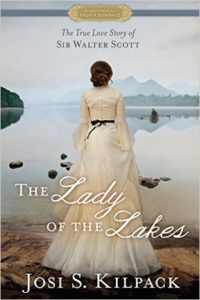© Cheryl Bolen
Author's Note: The Treasure
Houses of England are 10 spectacular estates that are open to the public. I'll be doing a series here on
each of these, seven of which I have been privileged to tour.
Charles Howard (1669-1738), the 3rd
Earl of Carlisle began construction of his great baroque mansion near York in
1700. A descendent of the youngest son of Thomas Howard (4th Duke of Norfolk),
the 3rd Lord Carlisle chose for his architect John Vanbrugh (who also built
Blenheim Palace).
The 4th and 5th earls traveled
extensively on the Continent and were great collectors, the 5th Earl having
taken the Grand Tour with his lifelong friend Charles James Fox, the great Whig
statesman. In addition to holding high public offices, the 5th Earl (1748-1825)
added extensively to the castle’s art collection.
 |
| Castle Howard, located in York, is one of England's 10 Treasure Houses. |
After the death of the 9th Earl of
Carlisle in 1911 and his countess 10 years later, the estates were divided
among their children. His middle-aged heir received Naworth Castle (where he
had been raising his family), and the eldest daughter received Castle Howard,
but she passed it to her younger brother Geoffrey Howard, Liberal MP. On his
death in 1935, Castle Howard went into a family-administered trust.
The Earls of Carlisle now own
Naworth Castle, and Geoffrey Howard’s grandson, Simon Howard (born 1956), now
lives at Castle Howard with his wife and young twins. He and his brother
Nicholas serve as directors of the private company which owns the property.
Castle Howard is one of the most
familiar of England’s great country houses because it is the setting of Brideshead
Revisited , Britain's most popular
TV miniseries ever--until Downton Abby.
HOUSE
The magnificence of the house, its
furnishings and art, and the lavish landscaping have earned Castle Howard
status as one of England’s 10 Treasure Houses.
Architect Sir JohnVanbrugh, who
also designed Blenheim Palace, was untrained in architecture but was a
well-known Restoration playwright and fellow Kit-Cat Club member with Lord
Carlise. “Vanbrugh had a genius for bold architectural composition,” according
to architectural historian Geoffrey Tyack.
Nowhere is Vanbrough’s splendid baroque boldness more apparent than in
the soaring, 70-foot domed great hall of Castle Howard, which centers the
house’s main block. The dome rests on pendentives that were painted by Antonio
Pellegrini and supported by towering, squared Corinthian columns.
 |
| The ceiling goes up 70 feet to the top of the dome. |
Corinthian columns also facade the
south front, with the plainer Doric columns fronting the north. The
juxtaposition of columns is just one of the clashes of classical architecture
seen at Castle Howard. Because construction of the house (far too modest a word
to convey its grandeur) took 117 years to complete and employed several
architects, baroque and Palladian architecture blend together in Castle
Howard’s exterior.
Visitors begin the tour in the
west wing, which features guest rooms and state rooms with impeccably restored
furnishings and museum-quality art by the Reynolds, Ruebens, Gainsborough,
Holbein, and 17th and 18th century Italian masters.
Some of the more memorable
rooms on display are the 6th Countess’s bedchamber furnished with the bed given
her by her parents, the 5th Duke of Devonshire and his wife Georgiana, and
pictures of her 12 children; the turquoise drawing room; the museum room; the music
room; the crimson dining room; the long
 |
| The Turquoise Drawing Room |
GROUNDS
Nestled in the Howardian Hill,
Castle Howard's 1,000-acre grounds feature gardens and parkland that are only
part of the 6,000-acre agriculture estate surrounding Castle Howard.
Entry points to Castle Howard’s
grounds feature tree-lined allees. During
the warmer months, visitors can take free guided tours of Ray Wood, or they can
also take a self-guided tour with a trail booklet. Ray Wood is a lusciously
planted woodland with a variety of trees and flowering shrubs that can be
explored along serpentine paths.
 |
| The Temple of the Four Winds |
The guided garden tour ends at
Vanbrough’s Temple of the Four Winds, a grand summer house that affords
sweeping views of the South Lake, Cascade, New River, the ornamental New River
Bridge, and the grandest Mausoleum in the Western Hemisphere. The Mausoleum,
while built by committee, was originally inspired by Nicholas Hawksmoor, the
Wren-trained architect who assisted Vanbrugh and took over as Castle Howard
architect after Vanbrugh’s death in 1826.
 |
| The Mausoleum is across the river and not open to the public. |
Built for the 3rd Earl who created
Castle Howard, the 90-foot tall, domed mausoleum supported on 20 pillars was
not completed until six years after the earl’s 1758 death. To this day, family
members are buried in the mausoleum, which is not open to the public. Their
bodies are carried along New River to their final resting place.
All the waterways at Castle Howard,
including the great lake, are manmade. The property’s massive walled garden
features three rose gardens planted with over 2,000 varieties. The South
Parterre Garden of grass terraces replaces an earlier formal garden, but the
parterre’s center Atlas Fountain is original.
Spending an entire day in York at
Castle Howard is one of the most memorable days imaginable. In my opinion.--Cheryl Bolen's most recent book is the
latest installment in her popular House of Haverstock series. It's a novella titled
Ex-Spinster by Christmas. Look for her next release in her Brazen
Brides series in May.























